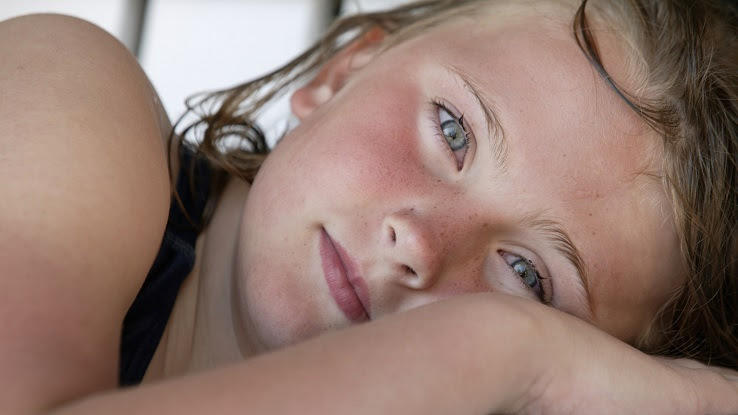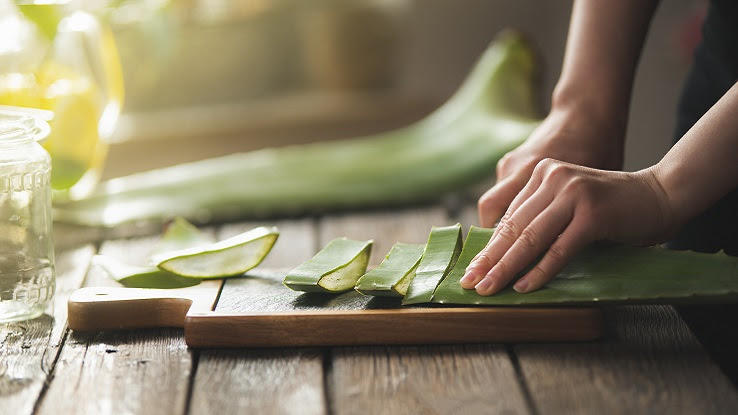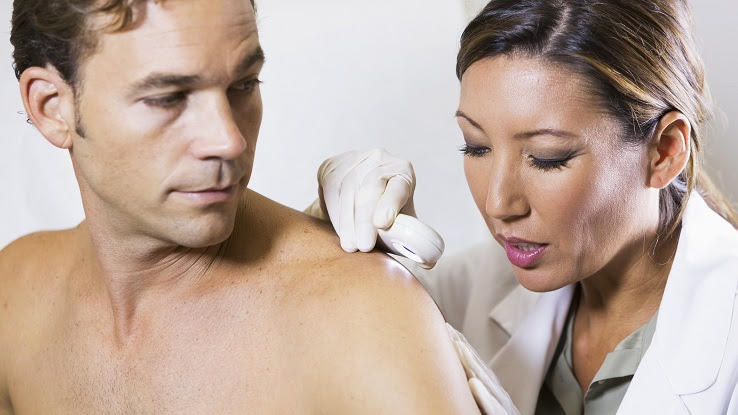
After going outside, you might develop a red, itchy rash that has nothing to do with bug bites, bee stings, or poison ivy. And, no, it’s not sunburn either. Each summer, many people develop heat rash in high temperatures, especially if they’re outside for long periods of time.
Fortunately, heat rash looks and feels much worse than it is insofar as it doesn’t have long-lasting effects — or stick around for that long if you treat it. In severe cases, you may have to seek medical attention, but, in most cases, natural, at-home remedies can heal most forms of heat rash. Here’s everything you need to know to beat the heat this summer.
What Is Heat Rash?
Heat rash presents as tiny bumps on the skin that appear after a period of exposure to sunlight or heat. Depending on how advanced the rash is, the bumps can be red, contain pus, and/or appear at the surface level or deeper underneath your skin. Miliaria is the scientific name for heat rash. An alternative common name for heat rash is “prickly heat.” Babies seem to be more susceptible to heat rash, but, especially in high temperatures, older children and adults can experience it as well.

The least advanced form of heat rash causes blisters, which are filled with fluid and develop at the surface of your skin. Although painful, these blisters pop easily, making this form of heat rash the easiest to treat. A deeper form of the rash, most often called prickly heat, causes red bumps and a characteristic pin-pricking, itchy sensation. Prickly heat can lead to an infection; the red bumps will fill with pus, called miliaria pustulosa in these instances.
Additionally, some cases of heat rash can cause large goosebumps to form deeper under the surface of the skin. This form of heat rash, miliaria profunda, often takes longer to heal.
What Causes Heat Rash?
When people are in a hot environment for an extended period of time, the body employs several methods to maintain homeostasis. For example, your body needs to maintain a certain temperature, regardless of the environment, in order to survive. Ever wonder why you sweat? Well, this is one of the body’s attempts to cool down and maintain that optimal temperature. Unfortunately, it’s also linked with heat rash.
As you may know, sweat comes from glands beneath the surface level of your skin; heat rash happens when those sweat glands are blocked. Even if the gland is blocked, the body will continue to produce sweat in response to the heat, so the type of heat rash that develops depends on whether the blockage is at the surface of the skin or deeper. When more sweat pools underneath the blockage, the bumps become bigger. If the glands become infected, pus develops as well.
Often, people diagnose themselves with heat rash. For milder cases, there is no need to see a doctor. In severe cases, doctors treat heat rash with topical steroids.

How to Treat Heat Rash
There are plenty of natural remedies for heat rash. A good way to start? Carefully clean the rash with soap and water in a cold shower. In addition to helping you cool off, this has the added effect of stopping your body’s sweat response, which, in turn, will disrupt the blockage. Additionally, spending a few minutes in front of a fan or air conditioner can also prevent heat rash from worsening. Operating on this same principle, old rags and cold compresses are both simple, natural means for dealing with heat rash.
Need something more? Sandalwood, colloidal oatmeal, baking soda, neem (a natural herb derived from the neem tree), calamine lotion, talcum powder, aloe vera, and Epsom salt can all naturally heal heat rash. All of these natural remedies for heat rash have unique properties that soothe and health the skin, and some of them can even reduce the pain, inflammation, and swelling that can accompany severe cases of heat rash.
When to See a Doctor For Heat Rash
Most cases of heat rash clear up in a few days — so long as you get out of the heat and stop the blocked sweat glands from producing more sweat underneath your skin. Once you cool off, the blockage will clear on its own. If left untreated, heat rash can lead to more serious infections. Redness or swelling, especially several days after the rash first occurred, often indicates an infection. Additionally, if the rash is painful or hot to the touch for several days after initial heat exposure, that may be a sign of infection. When heat rash is coupled with fever, chills, or swollen lymph nodes, see a doctor.

Although heat rash is a relatively benign medical problem, take it seriously. Heat rash is a physical sign that your body is responding not-so-optimally to the heat and could use some intervention to cool down. Continued exposure to heat can lead to more serious problems, such as heat stroke or heat exhaustion, both of which require immediate medical attention.
How to Prevent Heat Rash
The best way to prevent heat rash is to prevent sweat from pooling up on your skin. Proper clothes, proper ventilation, and being cognizant of prolonged exposure to hot temperatures can all help you prevent heat rash. Clothes that are made of heavier materials or layered will trap heat, causing excess sweat; clothes that are too tight will cause the same issue.

If you have to be out in the heat for a prolonged period of time, plan air-conditioned breaks, use a cloth to wipe the sweat from your skin, and wear loose, light clothes. Afterward, avoid using heavy creams and oils on your skin as these can cause sweat gland blockages, too.
Resource Links:
- “Incidence of Vesicobullous and Erosive Disorders of Neonates: Where and How Much to Worry?” via National Library of Medicine
- “Miliaria rubra, a manifestation of staphylococcal disease” via National Library of Medicine
- “Anti-inflammatory, analgesic, and antioxidant activities of methanolic wood extract of Pterocarpus santalinus L.” via Journal of Pharmacology & Pharmacotherapeutics | U.S. National Library of Medicine
- “Colloidal oatmeal: history, chemistry and clinical properties” via National Library of Medicine
- “Old fashioned sodium bicarbonate baths…” via Journal of Dermatological Treatment
- “Don’t sweat the heat rash” via Baylor College of Medicine





